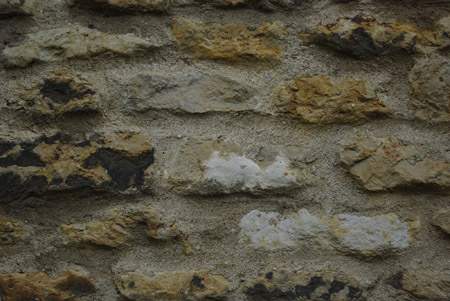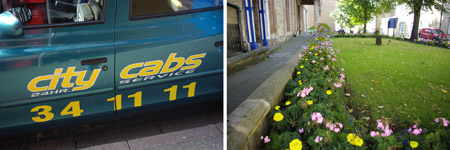Original URL: https://www.theregister.com/2008/09/11/review_pentax_k200d_dslr/
Pentax K200D digital SLR
Not as family-friendly as Pentax proposes
Posted in Personal Tech, 11th September 2008 11:02 GMT
Review Pentax is pretty clear about the target group for the K200D: the head of a family and digital camera beginner. Automation is the key here – most folk will simply want a camera they can pick up and shoot.
The first thing that hits you about the K200D is its size. Pentax describes it as “one of the most compact DSLRs on the market”, but we beg to differ. Compared with, say, the Nikon D40, the K200D seems large. Compared with your typical compact, it's enormous.
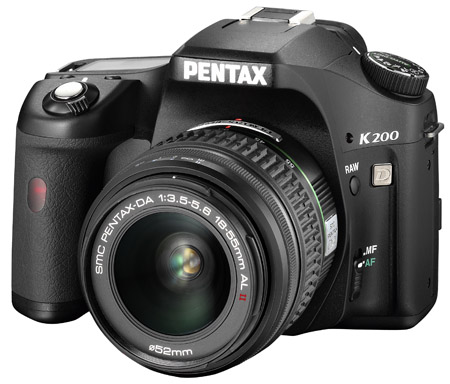
Pentax's K200D: hermetically sealed at over 60 points on the body
And, at 630g, it’s also quite weighty – and that’s before you add the lens and batteries. In fact, put a K200D in each hand, start pumping those arms and you’ll soon have biceps Arnold Schwarzenegger would be proud of.
Its dimensions, by the way, are 133 x 95 x 74mm. That said, the K200D feels nice and solid - it’s made of fibreglass-reinforced polycarbonate. What’s more, Pentax has made it pretty robust by hermetically sealing it with 60 seals on the body and 14 more on the camera grip.
True, you couldn’t take the K200D on a dive without proper water protection, but if you’re shooting in snow or on a beach, you can feel pretty relaxed about sand or moisture.
Another nod towards to the consumer sector is that fact that the K200D uses four AA-sized batteries and an SDHC memory card. The camera can use lithium-ion or Nickel Metal Hydride (NiMH) rechargeables, as well as alkalines. Pentax doesn’t recommend using the latter, and says they should only be used in emergencies or for checking the K200D’s functionality.
We think Pentax is being a little pessimistic here, because we tried using the K200D with alkalines and found that it operated well on them, although the penalty paid is a much reduced shooting capacity - around 200 shots without flash compared with 1000 or so for lithium-ion batteries, according to Pentax.
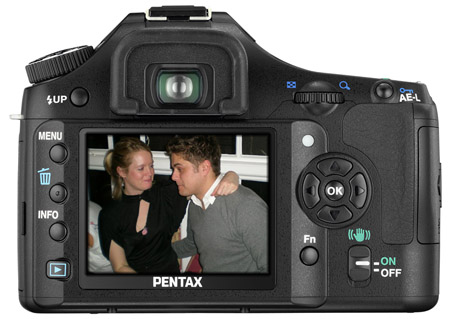
You'll have little trouble knowing what settings are selected
If you’ve used Pentax’s K100D, then the K200D will feel very familiar. On top, starting from the left, there's a large mode dial, pop-up flash, hot shoe and an LCD readout. In front of this are an exposure compensation button and a green button which resets the exposure mode to automatic. At the very front is a large shutter button and the on/off lever.
On the back are the flash's flip-up trigger; Menu, delete, Info and playback buttons; a 2.7in LCD screen with 230,000 pixels; Fn function button; a four-way controller; and the image stabilisation activation slider. There’s also a dial that can be used for setting various parameters such as shutter speed and sensitivity, and for zooming into the shots you've taken. It has an exposure lock button next to it.

It's weighty
The right side is home to the memory card compartment; on the left is flap covering the AV/PC port, and underneath the camera is the battery compartment. Tucked away near the lens is a RAW button, which lets you switch from JPEG to RAW files in an instant, along with a switch that flips between manual and autofocus modes.
In terms of features, the K220D has a 10.1-megapixel, 23.5 x 15.7mm CCD that shoots both RAW (PEF and DNG) and JPEG files up to a resolution of 3872 x 2592; a CCD cleaning system; in-camera sensor-shifting shake-reduction system; a shutter-speed range of 30-1/4000sec plus Bulb for long exposures; an ISO range of 100-1600; a crop of shooting modes, including auto, program AE, plus aperture, shutter and sensitivity priority - the latter matches aperture and shutter speed to the ISO setting.
It also features a handful of drive modes, including continuous shooting and auto bracket, plus various scene and picture modes, such as macro, portrait, night portrait and food, as well as in-camera editing, which lets you convert RAW files to JPEGs or tweak the image colour, sharpness and brightness.
Our sample came with an SMC Pentax DA 18-55mm F3.5-5.6 lens, equivalent to a 28-83mm lens in the 35mm format.
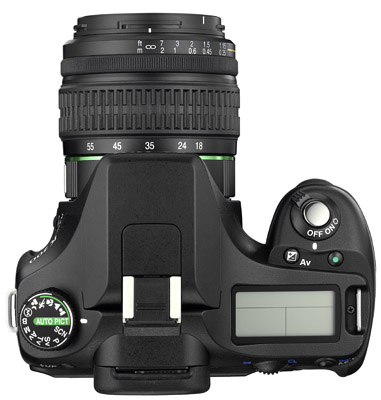
Despite its size, the K200D fits quite snugly in the hands
The K200D is aimed at the novice and claims to be family-friendly, and it is indeed straightforward and intuitive, making it easy to operate. Switch on is fairly quick, with the camera ready to take a shot in around a second. OK, it’s not quite the Usain Bolt of digital cameras, but it’s not bad, and shutter lag isn’t a problem either. In terms of handling, there’s certainly plenty to grip, and despite its size, the K200D fits quite snugly in the hands.
However, it feels heavy and we’re not convinced that many people would want to carry this around all day on a sight-seeing tour.
In terms of feedback, there’s plenty to be had from the viewfinder and the two LCD screens, top and back. You’d have little trouble knowing what settings you - or the K200D - have selected. The menu system offers four main groups - Record, Playback, Set-up and Custom - and is very easy to navigate.
The Fn function button makes it quick and easy to adjust parameters such as flash, ISO and white balance. Switching between JPEGs to RAWs is a doddle thanks to the dedicated RAW button on the front, and it’s nice not having to navigate a menu in order to switch the image stabilisation system on or off.
And hats off to Pentax for providing an excellent 260-page paper instruction manual - and for the fact that the supplied Photo Browser picture viewing software and Photo Laboratory editing software install very quickly.
If you simply switch the K200D on and leave it in auto - which we suspect the vast majority of users will do - you’ll generally get pleasing results. Picture noise is low, even at the higher ISO settings, and Pentax even provides a noise-reduction system for when the camera is at a high sensitivity setting. That said, we didn’t see it making a great deal of difference.
Sample shots
Click for full-size images
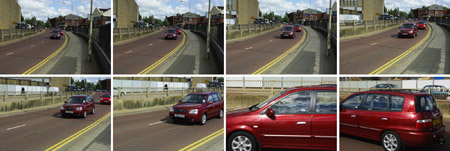
The K200D shoots up to 2.8f/s at the largest image file setting, storing up to four frames at a time

The K200D comes packaged with an SMC Pentax DA 18-55mm F3.5-5.6 lens, equivalent to a 28-83mm lens in the 35mm format
Sample shots
Click for full-size images
The 11-point autofocus system was fast and accurate, and the white balance and exposure systems consistently gave good results, although at times, some shots were a tad underexposed. Close-up shooting produced impressive results too, as did low-light shooting.
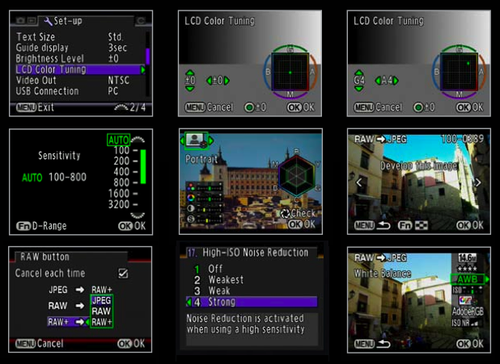
A selection of screens
The image stabilisation system helped to keep camera shake to a minimum. However, we were disappointed with the continuous shooting mode, which was sluggish when capturing fast moving objects. In the High setting, it shoots up to four frames at 2.8f/s.
On a happier note, the in-camera editing features were useful to have, especially the ability to convert RAW files to JPEGs.
Verdict
With the K200D, you get ease of use and good performance. But it’s rather bulky and we think it offers far more features than most family members would want or need. If you’re thinking of moving up from a compact, then give the K200D good consideration, but if you’re purely looking for a family camera – go for for the compact option or a super-zoom.
